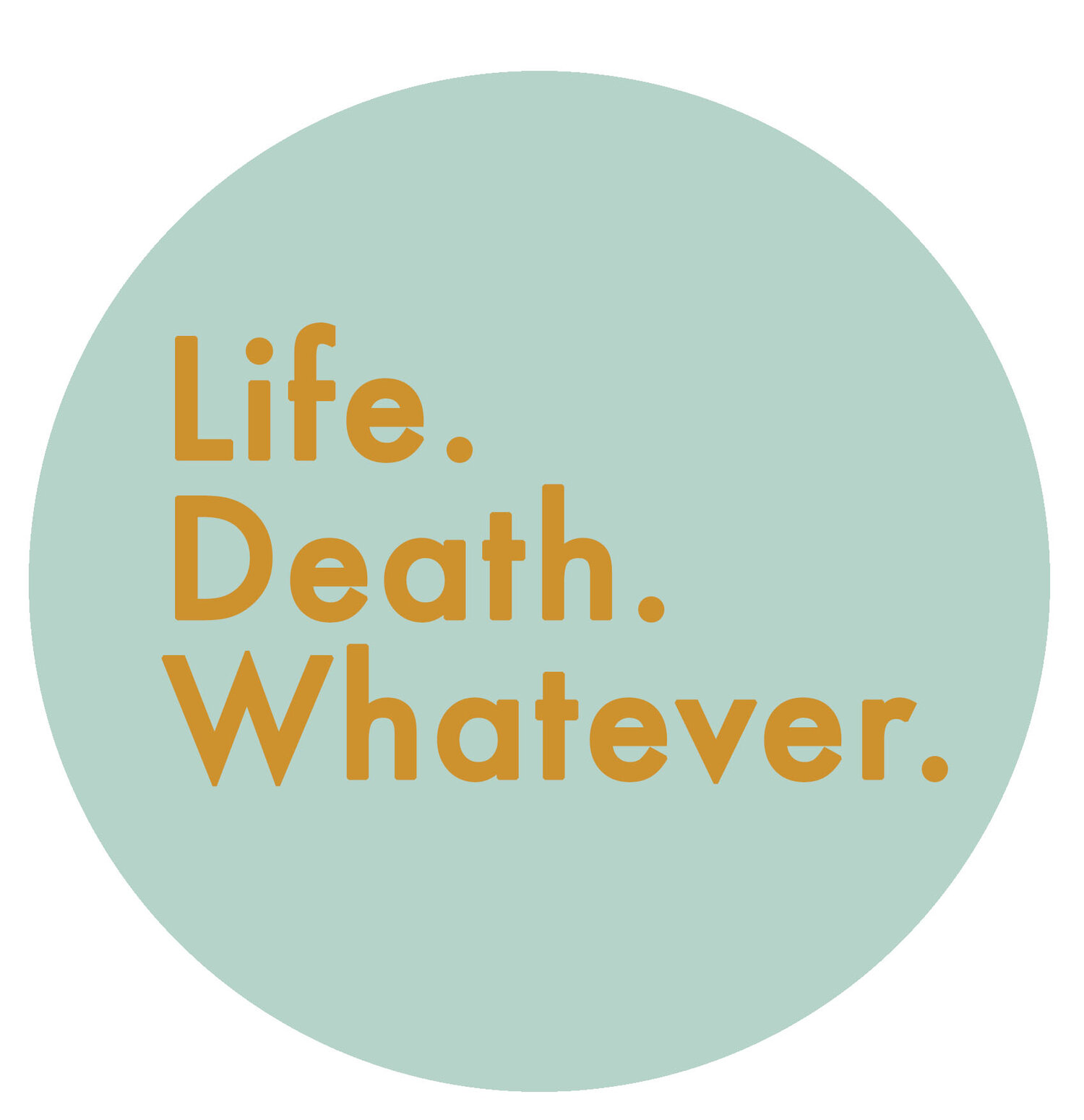Artists

Laura Ford 'Mummers'
Mummers is an extraordinary work from one of Britain’s most original sculptors, Laura Ford. She shows imposingly life-size figures in, what seems to be, a playground scene. One of the figures lies on the ground, perhaps dead, surrounded by the others. The figures wear shaggy costumers of fabric strips reminiscent of a Mummers’ play – a traditional folk performance. The scene is frozen at a moment of awful realisation and touches on issues surrounding the moral boundaries of young adults.
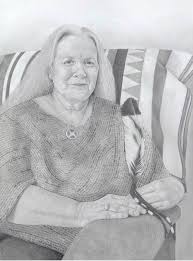
Claudia Bicen 'Thoughts in Passing'
Since she was a young child, Claudia Bicen has been transfixed by the question of how we should live. Convinced that the dying would have the answer, she contacted hospices across the Bay Area in California and asked to be put in touch with their patients. She spent the next two years going to meet these people and interviewing them about their lives - their reflections, regrets and lessons.
The culmination of her meetings is a series of nine life-size graphite pencil portraits. Using the text from more than fifty hours of interviews, she transcribed her subjects' words onto their clothing in the drawings and created a three-minute audio edit of each person’s interview to accompany their portrait.
In making this work Claudia came to observe a profound paradox: in talking about dying, these people taught her how to live more meaningfully and more intensely. For most people, what mattered was how they had participated in the world and what they had created – whether that was through connection with their children, community, work or nature. Even though she spoke with people from a wide range of socio-economic backgrounds, nobody wished they had made more money, worked harder or bought more things. In short, they were not concerned with what they consumed and took into themselves.
“If I learned any one lesson from my conversations, it is that meaning does not come from consumption, but creation,” Claudia says. “The meaningful life is one that gives more than it takes."

Philip Eglin 'Man of Sorrows'
Philip Eglin (b. 1959) studied at Staffordshire Polytechnic (1979-82) and the Royal College of Art, London (1983-86). He exhibits internationally and was awarded the Jerwood Prize for Applied Arts in 1996.
Eglin’s ceramic works reflect and comment on contemporary culture. Eclectic in their references, he has likened his characteristic intermingling of cultural icons, ephemeral images, symbols of consumer culture and handwritten scripts to channel hopping. References are made to a heterogeneous array of sources including Northern Gothic religious woodcarvings, Chinese export porcelain, English folk ceramics and the language of symbols used on contemporary packaging. His interest in such artefacts is not solely because of their intended aesthetic, but extends to the characteristic shapes and marks that are found on the underside and backs of objects. His most recent work explores juxtapositions of imagery related to football, religion and sex. He works on a range of sizes making small functional vessels at one end and large-scale figurative, sculptural works at the other.
His work is held in numerous public collections including the Stedelijk Museum, the Netherlands, Mint Museum, North Carolina, USA, British Council, London, the Fitzwilliam Museum, Cambridge, National Museum of Scotland, Edinburgh and the Victoria and Albert Museum, London.

Artist in Residence - Oliver Eglin
Oliver Eglin is the artist in residence throughout Life. Death. Whatever. and will be producing work throughout the month from his studio in the tearoom at Sutton House.
Oliver’s visual approach to the world can be seen in his series Et In Arcadia Ego. Produced in a variety of locations across Spain the work takes the tradition of bullfighting as a backdrop on which to discuss man’s physical imprint on the world. Combining the spaces used for bullfighting with the ruined remains of an ancient Roman amphitheatre on the outskirts of Seville, his photographs explore the role of spectatorship and its significance within human culture.
Creating a visual account of the habituation of violence in the ancestry of human history, Eglin’s photographs speak of the way in which beauty survives in a natural landscape increasingly encroached upon by the manmade. Looking at traces of human presence within a landscape of destruction, his photographs are characterised by a desire to readjust expectations for a subject through a visual abstraction of the world around him. In exploring the topography of ruins Eglin depicts the ephemerality of human civilisation and a decaying world at odds with its utopian ideals.
Oliver was born in Wales and lives and works in London. His work has been exhibited internationally at a number of major institutions including: Tate, Liverpool, The Royal Academy of Arts, London and The Wilson, Cheltenham Art Gallery and Museum.

Katherine Forster 'Loosy the Goose'
Loosy is one in a series of Beanie Babies recreated at 1000% scale by Katherine Forster. Since her mother's diagnosis with a terminal illness last year, Katherine’s work has become about her childhood and the increasingly precious time she’s shared with her mother.
The process of growing up can be confusing and scary, and simple things like soft toys can be the greatest comfort. “I found as a child that toys, who were then the same size as I was, could be friends and guides in a large and difficult world,” Katherine explains. “This is where my giant Beanie Babies have come from. I have created soft friends, who, larger than we are, might comfort, guide and support in difficult times.”

Kimberley Thomas 'Fuck off I'm 'avin a cup of tea'
Kimberley Thomas is an illustrative artist working between Ibiza and London. For 15 years she worked as a graphic designer and illustrator, as well as owning the only sex shop for women in Ibiza. She was the co-founder of Let's Go Crazy, one of London's foremost underage raves.
A battle with breast cancer inspired her to put exhibiting her artwork on her bucket list. Her first solo show was at Ibiza's exclusive Atzaro and was a resounding success. She survived cancer and set up The Collective at the London Westbank Gallery with co-curator Danny Rose.
Kimberley's work has a strong narrative, often sprinkled with a pinch of humour. This combined with her strong graphic style has built her a large group of collectors. Her work is a mix of traditional pen and ink, markers and digital skills. She is currently exhibiting in New York alongside My Dog Sighs, Paul Mcgowan and James Mylne.

Stephanie J Ryan 'Another Easter (Grandma's House)'
This work represents a continuation of Stephanie J Ryan’s interest in the psychodynamics of the family system, as an assemblage of the conscious and unconscious forces that drive human behaviour, beliefs, and attitudes.
The artist is interested in the stories that families tell themselves and present to others about their identity as individuals and as a group; in the contrast between the public and the private face. How do memories of events change over time, from the viewpoint of the storyteller and from that of the individual? How do these stories transmute and change over time? How many secrets are discovered as the children grow to adulthood and as their roles shift? What is changed in the transference of these stories to the next generation?
This painting is derived from family photographs of holidays, interwoven with appropriated images from popular culture, religion, books on etiquette, and alchemy, that are meant to disrupt the main narrative by suggesting gaps in memory and perception. While the images have their origin in the artist’s own fluid family history, her intent is to represent any family whose history contains issues left unaddressed, questions, and/or secrets left untold for whatever reason. Like a child playing with a doll’s house, Stephanie has the power to rearrange things, to alter the figures slightly, move them around the space; to add or subtract information, as a way of dialoguing with the dead and perhaps dispelling the ghosts of the past by allowing them to speak once more.
Stephanie is a representational artist who uses layering, fragmentation and appropriation to investigate interpersonal relationships and the conflicted terrain of the psyche. She’s a Professor of Art in Drawing/Painting at California State University, Fresno. Her work is included in numerous public and private collections, and she has exhibited her work in the U.S. and internationally.

Abi Overland 'Neverland'
Neverland is an illustration by Abi Overland, inspired by the ceremonies and celebrations of death. With a delicate layer of gold leaf integrated into the design, it comprises of extremely intricate dot and line work with a labor of love involved in each mark made.
Abi graduated from a BA (Hons) Illustration from the University of Brighton in 2014 and freelanced for a short while before embarking on starting her own business - beautifully illustrated dinnerware. She specialises in drawing detailed images of natural and organic matter creating surreal and other worldly landscapes to get lost in.

French & Mottershead 'Afterlife Home'
An immersive audio work offering listeners an intimate and visceral yet poetic and strangely calming meditation on their own mortality.
Lie down, rest your head on the pillow, put on your headphones, press play and listen.
As you lie, you hear an affective 20-minute audio that transports you to the most intimate of places, a place none of us will ever actually experience: the body’s decomposition after death.
Home describes in visceral, poetic detail the course of a human body’s decay as it is left undiscovered in a bedroom.
The work is experienced via a spoken narrative created using insights gathered from forensic anthropologists, ecologists, and conservators.
Though delivered by audio, Afterlife is also a highly visual work. Word, voice, bodily sensations and synchronicity with domestic sounds, work on the listeners’ imagination to create a self-portrait of what happens to their own body after death.
Home is one of four audio works from French & Mottershead’s Afterlife project, each designed to be experienced in their own environments: Woodland, Water, Museum and Home.
French & Mottershead’s Afterlife project is supported by The Wellcome Trust and Arts Council England.

Nick Potter 'Diane, London, 1980'
Diane, London, 1980 is a portrait of the artist’s late mother, capturing a sense of nostalgia for a time of great change in Britain. It is both hopeful and melancholic.
Nick was born and raised in London, England. Much of the artwork he produced there was fuelled by the banality of everyday spaces, particularly the elevators, lobbies and corridors of tower blocks and public spaces. After completing graduate studies at the Birmingham Art Institute, Nick moved to the U.S in 1999, where he taught at Florida State University for two years before moving to California, where he is a Professor at California State University, Fresno.
The majority of his current works reflect on artificial and utopian architectural spaces. They are images of power, class and materialism that represent fears about existence and isolation. Uninhabited, they hint at narratives that convey tension and anxiety, reminding us of the foreboding doubt that lingers only slightly below the surface of our desires.

Stella Vine 'Sienna pink sparkly dress'
Discovered by Charles Saatchi nearly a decade ago in a small gallery in London’s East End, Stella Vine became the centrepiece of his 2004 New Blood show, catapulting her to overnight fame.
At once naïve and bright, she has since become a leading figure in the UK art scene. Sienna pink sparkly dress is a progression from her earlier work: childish, saccharine images of doe‐eyed, flush‐cheeked women including Princess Diana and Kate Moss frequently offset against unsettling text scrawled in blood red paint.

Kate Linforth 'Specimens' 'Host'
Through the medium of encaustic Kate explores her interest in the Victorian obsession with entomology and their desire to capture, suffocate and pin delicate creatures in the name of preservation. Vivid colours emerge with pleats and folds that emulate these unfortunate creatures.
The National Trust fight a battle against such creatures and Sutton House would have played host to parasites and trapped creatures during its years of dereliction. Butterflies, once a symbol of the spirit of the dead, would have become trapped against dusty windows of this grand house. Although the house was once in decline, its decay gave life to so many creatures, often unseen.
Kate graduated from the University of Kent in 2013 and has exhibited in London and the South East. Earlier this year she was awarded funding for a prize-winning project entitled HIVE where over five hundred patterned wax tiles were created to cover a large screen displayed within Rochester Cathedral.

Karen Le Roy Harris 'Like Flies to Flesh'
Like flies to flesh was inspired by Geoges Bataille’s Visions of Excess. The installation explores the idea of the excessive body. The suspended figures are carcasses strung up - a portrayal of death. Attracted to this display of flesh are paper butterflies - fluttering towards it like a swarm of flies to rotting meat.
‘Are these the eyes of the crowd attracted by the imminent spectacle of torture? But why would these absurd eyes be attracted, like a cloud of flies by something so repugnant?’
Georges Bataille, Visions of Excess
The installation questions our desires, abjection and mortality. Signs of life contrast ideas of death and abjection. The flesh itself is uncontainable and bleeds out onto the floor.

Laura Dee Milnes 'Carrion, carrion'
Framed in the pseudo-domestic setting of the recreated 'squat' at Sutton House, the installation Carrion, carrion draws upon physical manifestations of grief, and an exploration of the taboo reality of the human body, post mortem - the dead body as matter, material and object. The artist wishes to make manifest processes that seem incomprehensible and unpleasant, yet beautiful and inevitable, creating conversation between sculpture, performance, text, sound and what has been left behind.
This physical study of death and ontology, prompted by the artist's very personal experience, explores the transition of body to carcass, a metamorphosis that uncannily mirrors the transformative experience of mourning. The room is host to an assemblage of remnants, some found, some fabricated. Each work is layered delicately on top of the existing exhibit, sitting comfortably among but not intruding on what already remains of the building's rich history.

Jenny Lewis 'One Day Young'
Jenny Lewis wanted to tell a story about the strength and resilience of women post-childbirth that goes largely unacknowledged in today’s world. To reassure women that childbirth is ok; yes it’s painful but it is a positive pain, one that has purpose and is just part of the journey, a rite of passage into motherhood. To make visible other emotions that are far more powerful: the joy, the overwhelming love and the triumphant victory every new mother feels.
Very early on in the project Jenny knew she wanted to concentrate on the first twenty-four hours, when a woman’s body is engulfed by hormones, to capture the unrelenting physicality of the moment, straight from the battlefield. Sweat still glistening on the mothers’ skin, the translucent umbilical cord, freshly severed, and wide-eyed wonder as the women come to terms with the magnitude of what they have achieved and survived.
Jenny leafleted Hackney, the borough where she lives to find recruits. As the series developed over five years, the mantra of calm running through the images was impossible to ignore. The collection of images is both defiant and beautiful, challenging the expected vision of those first twenty-four hours, a pure celebration of what it means to be a mother.

Christopher Oliver 'Know Your Beholder'
Know Your Beholder is an ambient piece of music created specifically for the Great Chamber in Sutton House. Many people associate death with fear, or that they are indeed the same thing, and Christopher Oliver is no exception. His two great fears are of the dark and more recently, of flying. Both are essentially linked to his inherent fear of death.
This piece is a rumination on those two fears; Chris' attempt to express and articulate sonically his emotions on the subject of death. Embedded within the piece, you will hear flight safety announcements, field recordings and cruise sounds from 37000 feet. To counter these more literal earthbound sounds, Chris has tried to generate the more ethereal sound of his own passing into the void.
Christopher Oliver is a multidisciplinary artist and musician. He has produced sound for iconic fashion brands including Kenzo, Hunter, and Parisian stores Printemps & Colette. He co-directs BLBX and works in South East London.

Archie Miles 'The Enigmatic Yew - A Glimpse of Immortality'
The yew tree has been revered since pre-Christian times as a symbol of eternity of the soul and also of ceaseless renewal. Like all trees it does have a life span, but it grows in many strange and unpredictable ways that often mask its true antiquity. Although many experts have tried to unravel the growth mode and exact ages of ancient yews the tree continues to confound and guard its secrets. Are the oldest trees 2,000, 3,000 or even 5,000 years old? So much mystery and superstition still attends the tree and every ancient specimen, in much the same way as every last human being on the planet, is a unique individual. It was an old tradition that passing a coffin through the hollowed heart of Britain's most ancient yew at Fortingall in Perthshire conferred immortality of the soul on the departed.
Photographer Archie Miles has a lifelong passion for trees. He has travelled throughout the UK to photograph many of the country's greatest and rarest trees as well as a huge diversity of woodlands, building up a library of over 300,000 photographs.

Simina Popescu 'Of Death & Beauty - a reflection'
Simina is a 19 year old Romanian illustrator, currently based in London. Her work is primarily figurative and small scale, aiming to create a personal, intimate relation with the audience. She was inspired primarily by BJ Miller's speech 'what really matters at the end of death' and through illustrating quotes of it, she put emphasis on aesthetic and sensorial pleasure as a means to come at peace with oneself.

Ellie Reid 'These were my tears'
These Were My Tears was made in the wake of the death of Ellie Reid’s mother. Initially made as a piece that could be performed with the body, it describes the all encompassing experience of grief. A feeling that is it at once, a weight and burden, but also of reassurance. A place of both discomfort and comfort.
Ellie Reid is an artist who lives and works in London. As a sculptor she is interested in how materials might be used to explore human emotion and response. As such she uses varied media to explore relationships and our place in the world.
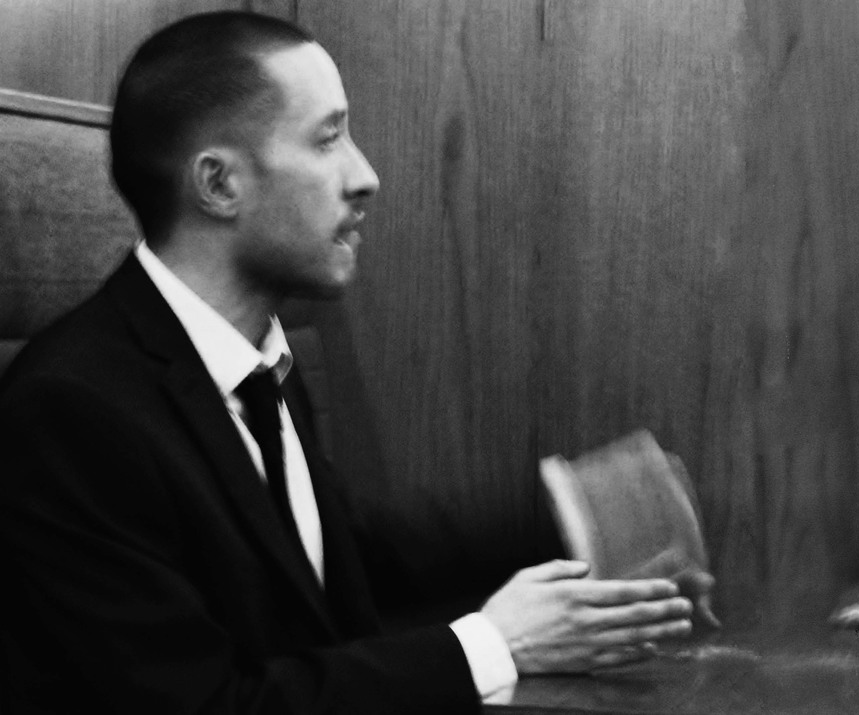
Chairman Kato '7 Days in the Life of the Dying'
We are told to enjoy the journey of life, to make the most of each moment. But it is the fact of death that gives us these insights.
The inevitable end of it all is what confers meaning to this short experience. Kato carried a camera with him for a week and photographed everything he did. He has suspended them in a floating structure, a dense tangled web of memories now gone forever. It will probably fall apart over the course of the exhibition. He's just going to let it. What else can we do?
Chairman Kato is an artist and musician. He works across painting, photography, installation art and electronic music. He also lectures and teaches. He shares his East London studio with his stuffed mouse Vinnie.

Adam Pegg & Lucy Coleman Talbot 'Transportation for Life'
I knew a man once who used to like working with cars. A German, wonderful person, but he would spend all his time fixing his car and making it run beautifully. Then came the war, and he lost his car. He had to walk everywhere, and so he found himself spending his time making his body fit and trim. He fixed it up and it ran beautifully. After the war, he decided not to go back to cars. “Cars come and go” he said, “but your body is your transportation for life."
This collaboration from photographer, Adam Pegg and writer, Lucy Coleman Talbot features tattoo artist Alex Simpson was inspired by Colin's Higgins' book Harold and Maude - a story of love, life and death.
Transportation for Life is also the name of a chapter in Lucy's book the Little Book of Maudism. It explores our human desire for permanence and the emotional attachment we can form to objects.
'We come on the earth with nothing, and we go out with nothing, so isn’t ownership a little absurd?’
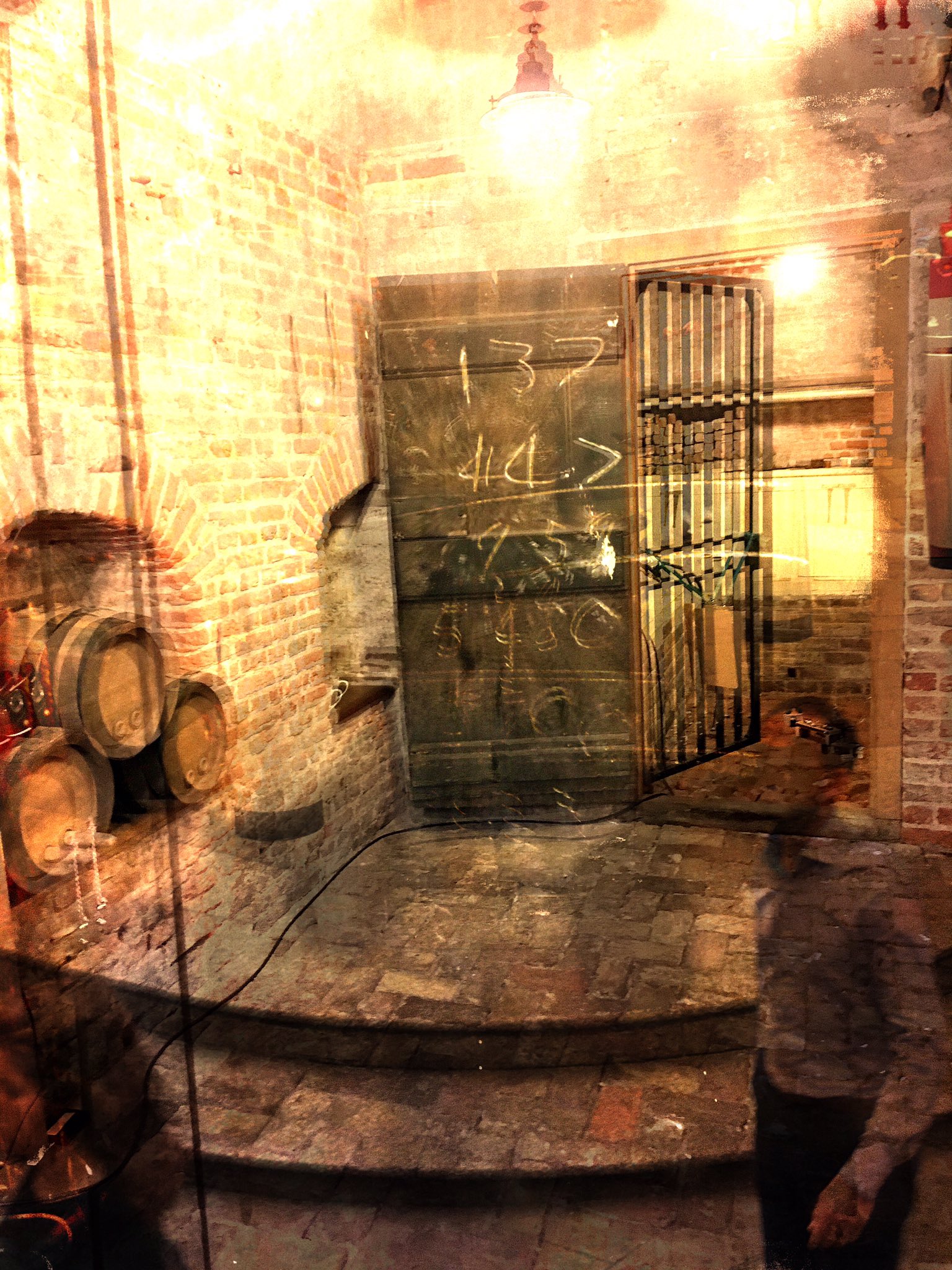
Cate Field 'Memory #15 and Memory #16'
Memory #15 and #16 explore themes of memory, grief, loss and acceptance.
Explorations of ancient, sacred sites, graveyards, cemeteries and other places with ‘history’ inspired the work. These two composites were made specifically for Life.Death.Whatever. by art teacher and lecturer Cate Field using images of the cellar in Sutton House.

Coffin Playroom
The Gallery houses the Coffin Playroom, sponsored by Ecoffins. Decorate the coffins, try them out for size and play in the multi-coloured coffin ball pool. Coffin selfie anyone?
Get creative and submit your own Life. Death. Whatever. inspired artwork to the wall in the Coffin Playroom. Tilly Warren is a student at Charter School in East Dulwich and is the first to be featured in the gallery.

Fergus Wessel - Stoneletters
Pay homage to life, death and everything in-between at the Life. Death. Whatever. grave installed at Sutton House throughout October.
This custom headstone has been made for LDW by Fergus Wessel at Stoneletters.
Stoneletters Studio produces finely made headstones for clients all over the UK. Good, old-fashioned typography fused with excellent craftsmanship, involving hand-drawn, hand-carved lettering set the tone for this quiet workshop in Oxfordshire.
Fergus Wessel who runs the workshop believes that more is needed when helping people commission headstones. The bereaved need time to consider, time to think, and most importantly, guidance. Moving away from the rather austere, polished monumental industry, the workshop strives to make headstones which are uplifting and pleasing to the eye. Clients are encouraged to choose words that stand the test of time and will be interesting to read in years to come; in this way the inscriptions and the memory will hopefully live on.
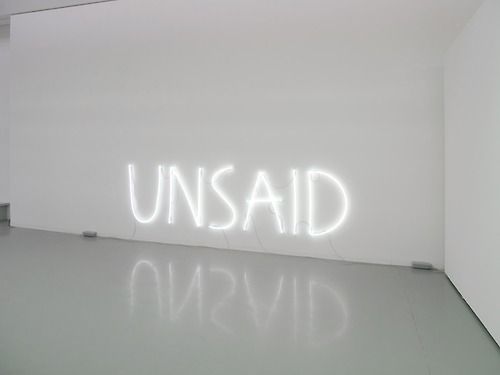
'Unsaid'
The end of a relationship or the death of someone we love can put us in a position where our words remain forever unspoken. Or it can be that we're simply unable to say what we need to say the most to someone who is still around.
The staircase at Sutton House will be home to thousands of messages showcasing the words that we aren't able to say, contributed by visitors to Life. Death. Whatever. during October.
Letters of love & loss and pained postcards will find a home with us.
Whatever you haven't said, find a postcard and say it here.

Annabel de Vetten, Conjurer's Kitchen 'This is a cake'
Made for the Good Funeral Awards 2016

Hautlieu School, Jersey
Students at Hautlieu School in Jersey were asked to produce work on the subject of mortality. Their work will be displayed in the Great Chamber of Sutton House throughout October.
